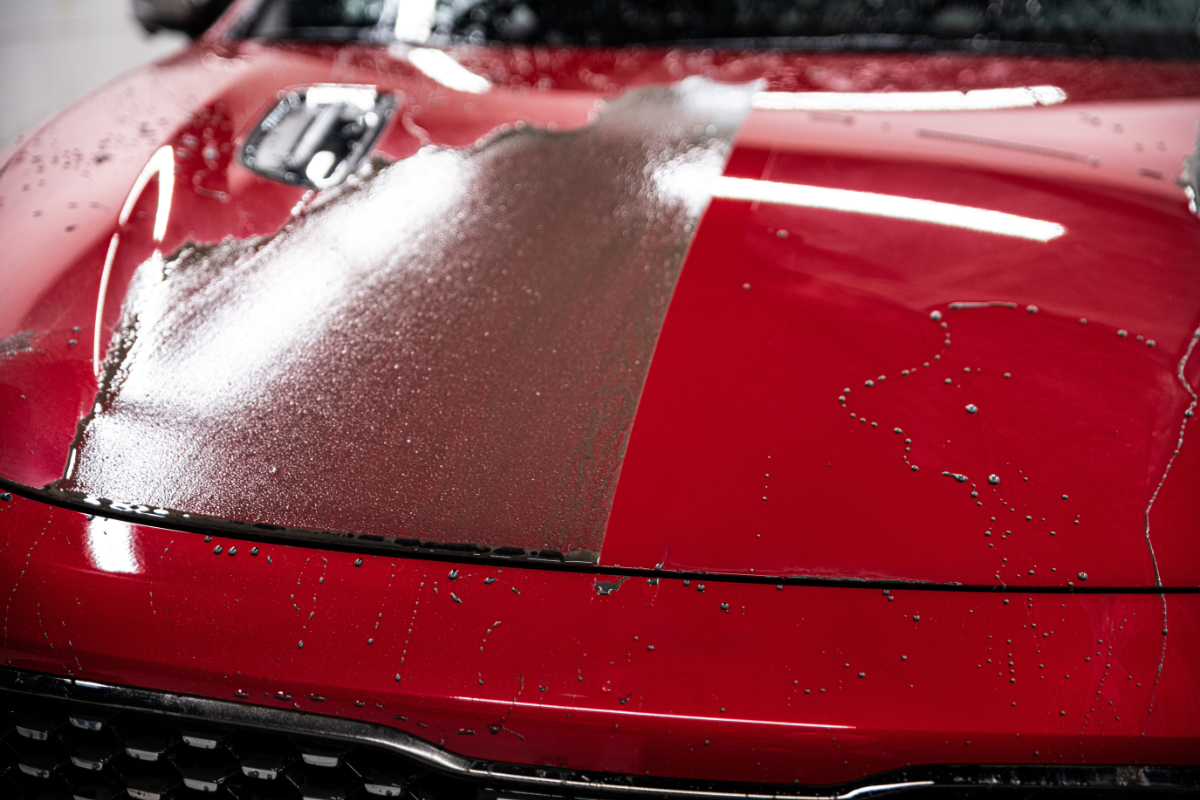Long-Term Outcomes with Specialist Ceramic Coating Philadelphia Applications
Long-Term Outcomes with Specialist Ceramic Coating Philadelphia Applications
Blog Article
Why Ceramic Finishing Is the Ultimate Service for a Perfect Finish
Ceramic covering has actually emerged as a leading solution for those looking for a flawless surface for their vehicles, thanks to its remarkable resilience and safety attributes. What aspects genuinely set ceramic layer apart?
What Is Ceramic Finish?

When used properly, ceramic coating produces a hydrophobic surface area that fends off water and dirt, making it simpler to maintain and cleanse. Unlike typical waxes or sealers, which normally offer short-lived defense, ceramic coatings can last for a number of years, depending upon the item quality and application method. The process of applying ceramic finishing requires thorough preparation, including extensive cleansing and sometimes paint adjustment, to ensure optimal bonding and effectiveness.
Ceramic coatings are not limited to auto surface areas; they can additionally be made use of on different materials, including glass, metal, and plastics, giving a flexible remedy for improving security. On the whole, ceramic covering stands for a substantial development in surface security technology, integrating both visual and functional advantages for a wide variety of applications.
Advantages of Ceramic Covering
While numerous surface area protection alternatives exist, the benefits of ceramic coating stand out because of its unique residential or commercial properties and durable performance. One of the main benefits is its phenomenal sturdiness. Ceramic Coating Philadelphia. Unlike conventional wax or sealers that call for frequent reapplication, ceramic finishes offer a resilient layer that can last for a number of years, dramatically reducing maintenance initiatives
An additional significant advantage is boosted security against environmental impurities. Ceramic coatings develop a hydrophobic surface that pushes back water, dust, and various pollutants, making it simpler to cleanse. This function not only maintains the car's appearance however likewise lessens the threat of rust and oxidation, especially in extreme weather condition conditions.
In addition, ceramic coatings provide premium resistance to UV rays, stopping fading and deterioration of paint gradually. This UV protection is vital for keeping the visual value of vehicles and surfaces exposed to guide sunshine.
In addition, the glossy surface attained with ceramic covering enhances the general visual allure, giving surfaces a showroom-quality shine. In general, ceramic finishings represent a substantial innovation in surface protection modern technology, providing long-lasting benefits that accommodate both aesthetic and practical requirements.
How It Works
Comprehending the science behind ceramic finishes exposes just how they provide such remarkable protection and longevity. At its core, a ceramic coating is a liquid polymer that chemically bonds with the lorry's factory paint.
The application procedure involves multiple steps, including surface prep work, which is essential to achieving optimal adhesion. Once used, the finish undergoes a curing process, throughout which it sets and creates a semi-permanent bond with the paint surface. This bond is what differentiates ceramic finishings from standard waxes and sealers, giving a longer-lasting safety barrier that can sustain for several years.
In addition, the thickness of the layer can improve its safety qualities, guaranteeing that it can endure harsh conditions. Eventually, the science of ceramic finishings integrates advanced products with cutting-edge application methods to provide an unequaled level of protection and aesthetic enhancement for automobiles.
Contrast With Typical Techniques
The advantages of ceramic finishes come to be specifically obvious when compared to typical paint security techniques such as waxes and sealers. While waxes use a temporary sparkle, normally lasting you can try this out a few weeks to a pair of months, ceramic coverings supply a lasting protective layer that can endure for several years. This toughness significantly lowers the frequency of reapplication, making ceramic layers a much more cost-efficient remedy with time.
Furthermore, standard methods frequently call for substantial preparation and numerous applications to accomplish an acceptable level of defense. In comparison, ceramic finishes bond at a molecular degree with the lorry's surface area, creating a durable guard against environmental contaminants like UV rays, acid rain, and road salts. This bond improves the vehicle's resistance to scratches and swirl marks, which are prevalent with typical waxes and sealers.
In addition, the hydrophobic residential or commercial properties of ceramic coatings repel water and dirt, causing simpler cleaning and maintenance. On the other hand, wax and sealant-treated surfaces can draw in grime, demanding even more constant washing - Ceramic Coating Philadelphia. On the whole, ceramic layers not just offer superior security yet also supply a more enduring and aesthetically enticing surface, establishing them as the favored option for discerning lorry owners
Application and Maintenance Tips

Using a foam applicator, apply the layer in small areas, complying with the supplier's guidelines concerning thickness and overlap. Allow sufficient healing time in between coats, normally 24-hour, to guarantee correct bonding. After application, it is important to stay clear of exposure to water or severe components for at the very least a week to permit the finishing to fully heal.
For upkeep, clean the automobile frequently with pH-balanced soaps and avoid abrasive materials. Touchless auto laundries are advised to reduce scraping. Furthermore, using a ceramic upkeep spray can enhance the finish's hydrophobic residential or commercial properties and durability. Routine examinations for any indicators of wear will certainly assist preserve the finish's integrity and preserve that excellent finish.
Verdict
In final thought, ceramic layer emerges as an exceptional option for achieving a flawless automotive surface. By forming a robust bond with manufacturing facility paint, ceramic covering successfully guards against scratches, UV rays, and ecological contaminants.

Report this page